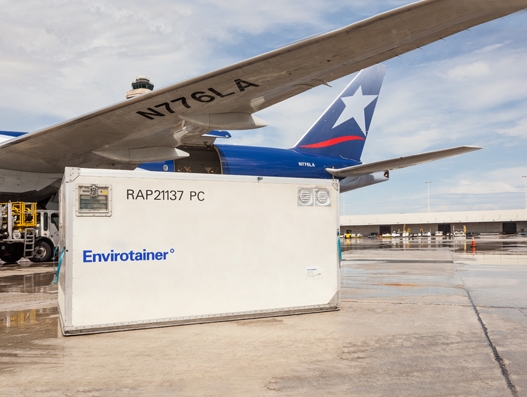
Pharma drives Miami Airport’s freight traffic in 2016
<p style="text-align: justify;">Apr 12, 2017: Miami International Airport (MIA) has seen eight percent increase in international freight traffic in 2016, according to recently released data by the US Department of Commerce.</p> <p style="text-align: justify;">Largely responsible for the spike was pharmaceutical (pharma) freight, which surged 48 percent year over year to $4.4 billion. Since 2010, when […]

Apr 12, 2017: Miami International Airport (MIA) has seen eight percent increase in international freight traffic in 2016, according to recently released data by the US Department of Commerce.
Largely responsible for the spike was pharmaceutical (pharma) freight, which surged 48 percent year over year to $4.4 billion. Since 2010, when the total value of pharma shipments was $1.8 billion, MIA’s pharma trade has grown by 140 percent.
In 2015, MIA was designated by the International Air Transport Association (IATA) as the first pharma freight hub in the US and the second in the world. MIA was recognised for organising its pharma logistics providers to undergo IATA’s Center of Excellence for Independent Validators (CEIV) Pharma Certification Program, which certifies that pharma products are transported in accordance with global best practices
To grow the global pharmaceutical air cargo industry, MIA and Brussels Airport – the first two IATA-designated pharma freight hubs in the world – partnered to create Pharma.Aero in October 2016. The goal of the association is to be a collaborative group of airport operators, pharma shippers, CEIV-certified cargo communities and other air pharma stakeholders focused on improving pharma handling and quality in the air cargo industry worldwide. Since its launch, the organisation has added Singapore Changi Airport, Sharjah (UAE) International Airport, Chhatrapati Shivaji (Mumbai) International Airport, Brussels Airlines, Singapore Airlines, Brinks Life Sciences, Johnson & Johnson, Pfizer and Merck Sharp & Dohme Corp. as strategic members.
“Our efforts to maximise pharma freight traffic at MIA continue to pay dividends for Miami-Dade County, the state and the nation,” said Emilio T González, director, Miami-Dade Aviation.
“The World Health Organisation projects that the global pharma industry will rise in value from $300 billion to $400 billion within the next three years, and we want to position MIA at the center of that growth trend.”
In addition to boosting pharma freight traffic, MIA remained the busiest airport for international freight in the US and in the Western Hemisphere in 2016, handling: 83 percent of all air imports and 79 percent of all air exports between the US and the Latin American/Caribbean region. MIA also continues to handle the majority of America’s perishable imports by air, including: 89.2 percent of all flower air imports; 66.7 percent of all fruit and vegetable air imports; and 49.8 percent of all fish air imports. In Florida, MIA’s 2016 air trade amounted to 92 percent of the state’s total air trade value and 40 percent of its combined (air & sea) trade value.

